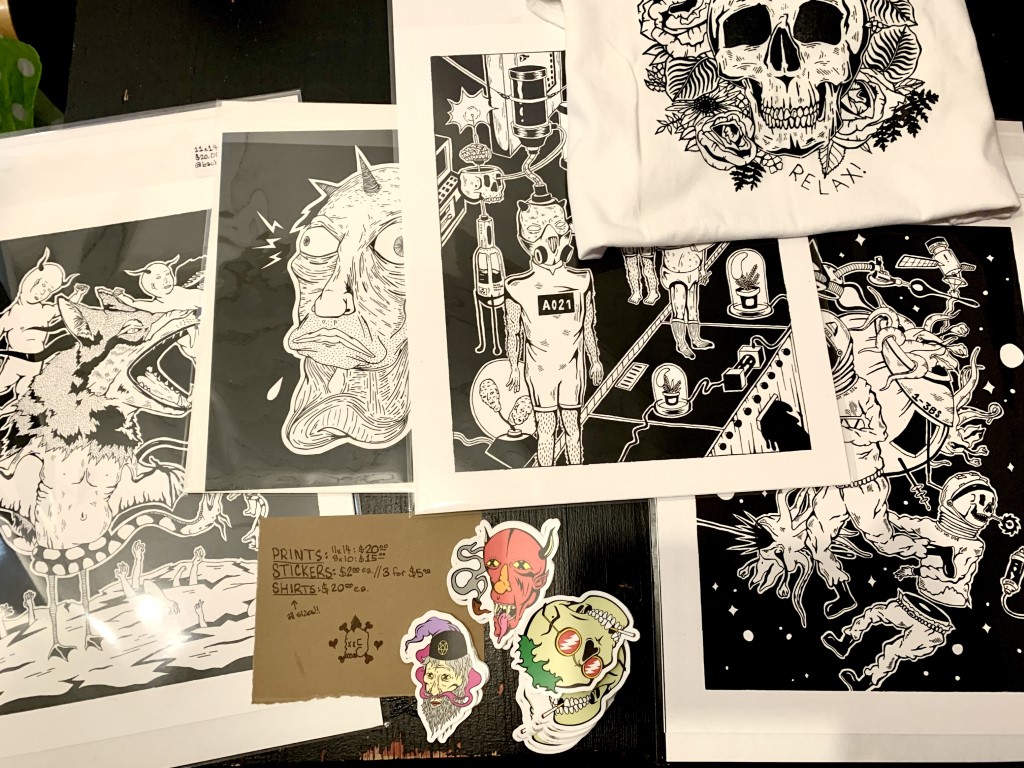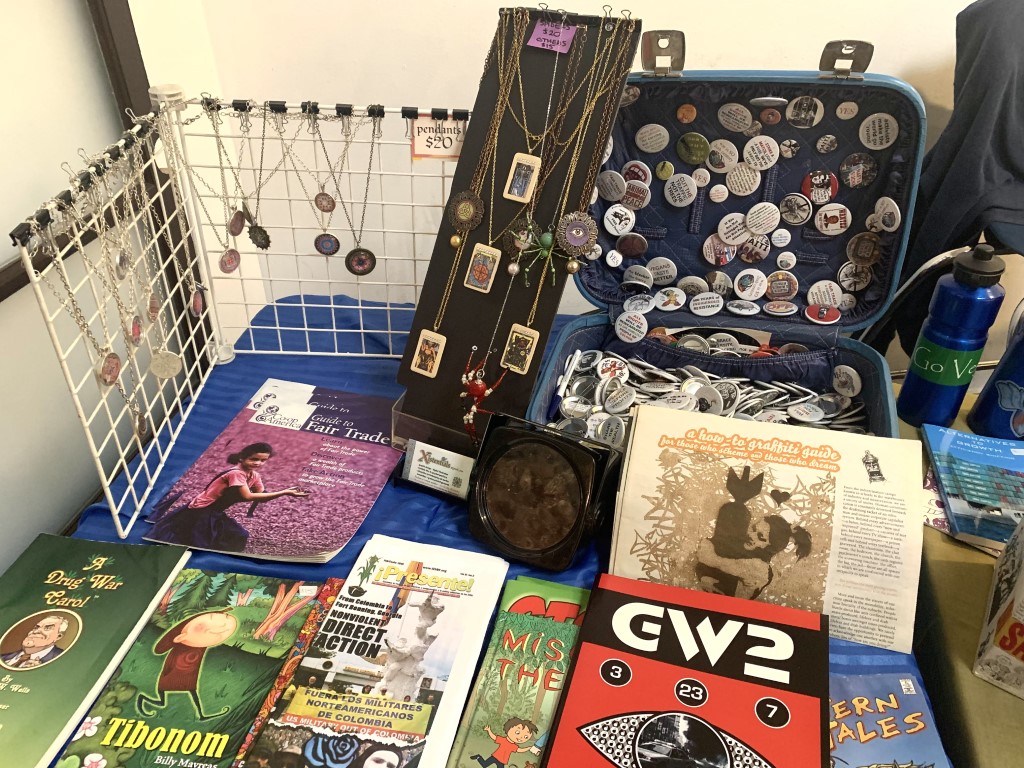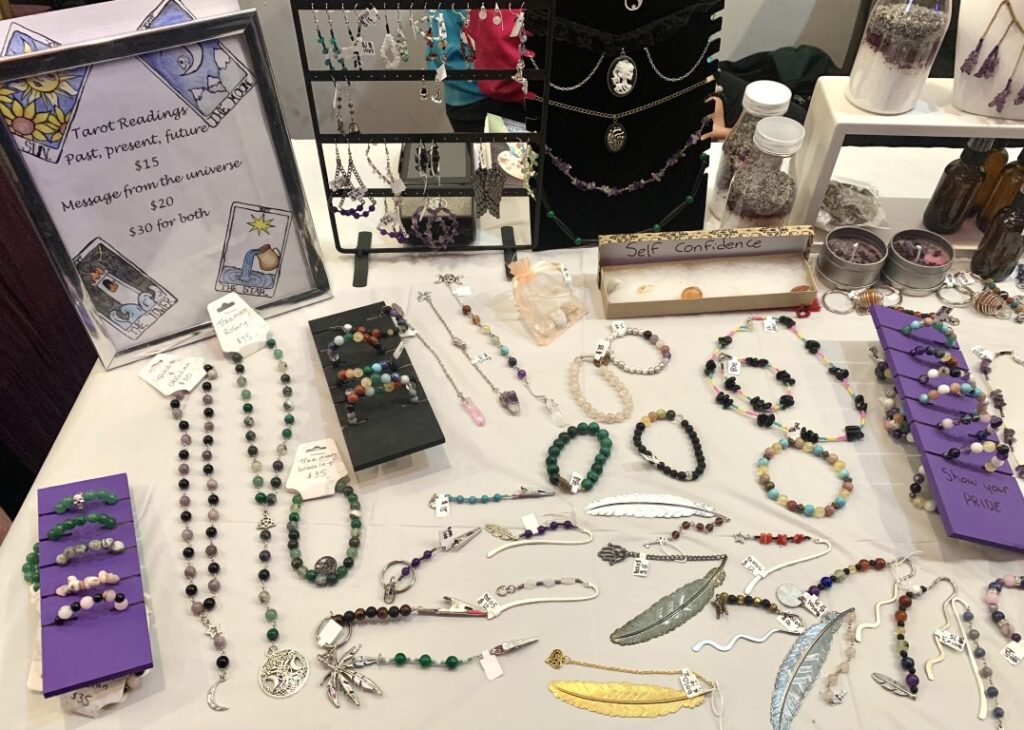A Zero-Barriers Celebration of Creativity
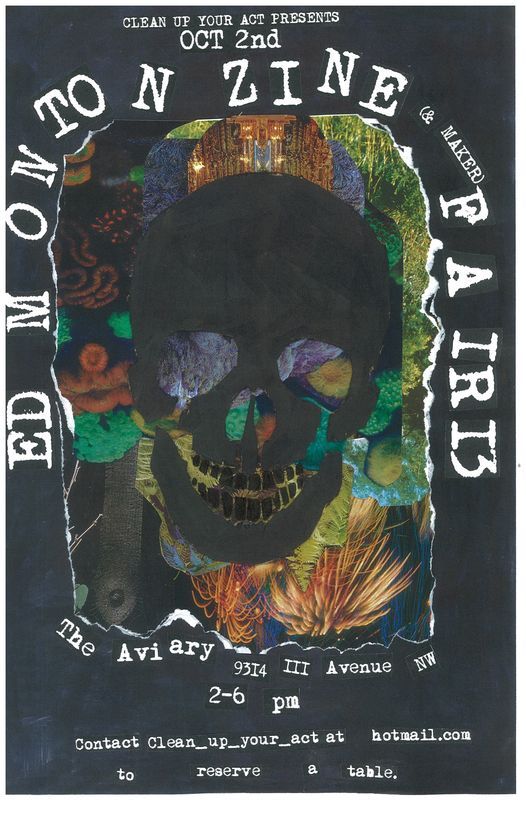
review and photos by Piper Keyes
As I rode the city bus to The Aviary on 9314 111th St on October 2, I wondered what would lie in store for me at Clean Up Your Act Productions’ thirteenth annual Edmonton Zine (& Maker) Fair.
A friend had alerted me to its existence a few weeks prior, and I’d immediately written it into my calendar. Being an avid zine-maker myself, I was excited at the prospect of chatting with other Edmonton-area zinesters and curious to see what they might have to offer.
Upon walking upstairs to the small, 160-capacity venue, I was greeted by loud, fast punk music and the sight of about a dozen tables around the perimeter of the room, each one neatly arranged to display its vendor’s products. To my left, there were masks, buttons, jewellery, patches, stuffed animals, and anti-war literature; to my right, I saw homemade picture books, art prints, cassettes, tarot readings … and what I had come for: zines.
A zine (derived from “magazine”) is a small-circulation publication made of original or appropriated text and images, usually self-published and reproduced via photocopier by an individual or a small group of people.
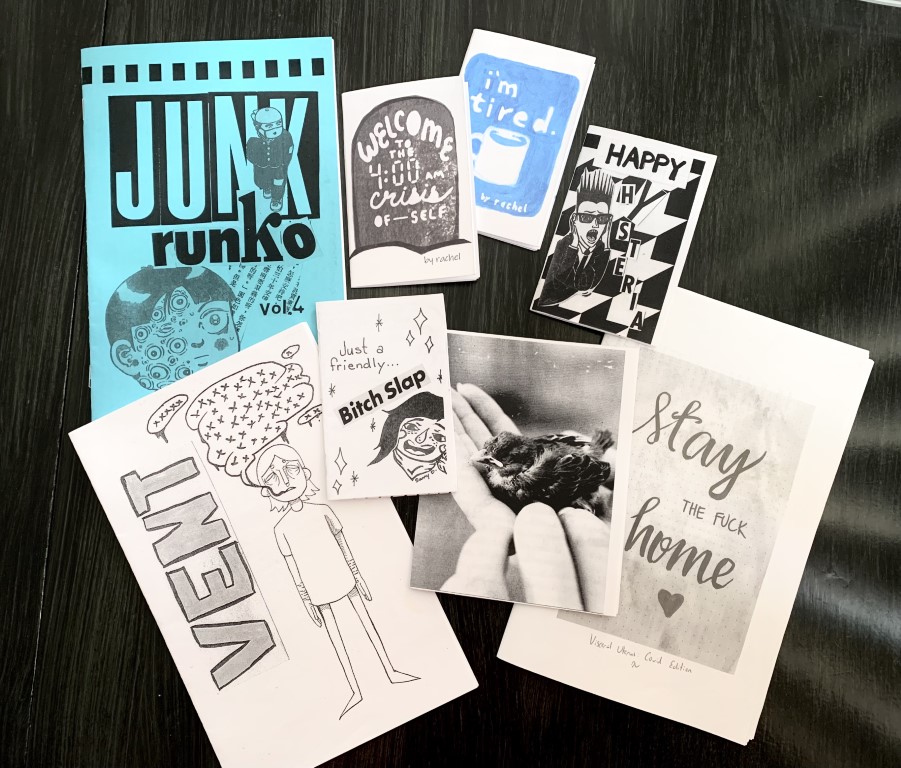
In practice, zines encompass a massive range of formats, sizes, and topics; an author could write whatever they want, such as poetry, a political manifesto, a personal memoir, a recipe book, or anything else they can think of. While zines typically come in a booklet form, they’re sometimes printed on a flat sheet of paper, or perhaps even bound into a book.
Given my personal interest in the medium, I was especially keen on speaking with some of these artists about their craft. In particular, I wanted to know what appealed to them about making and distributing zines.
For Rachel Jackson (@berryraindropp on Instagram and etsy), the answer seemed easy: the vulnerability.
“It allows the creator to scream into the void, and then other people can see that, read that, and see that they are not alone in whatever struggle that they’re finding themselves in,” she explained.
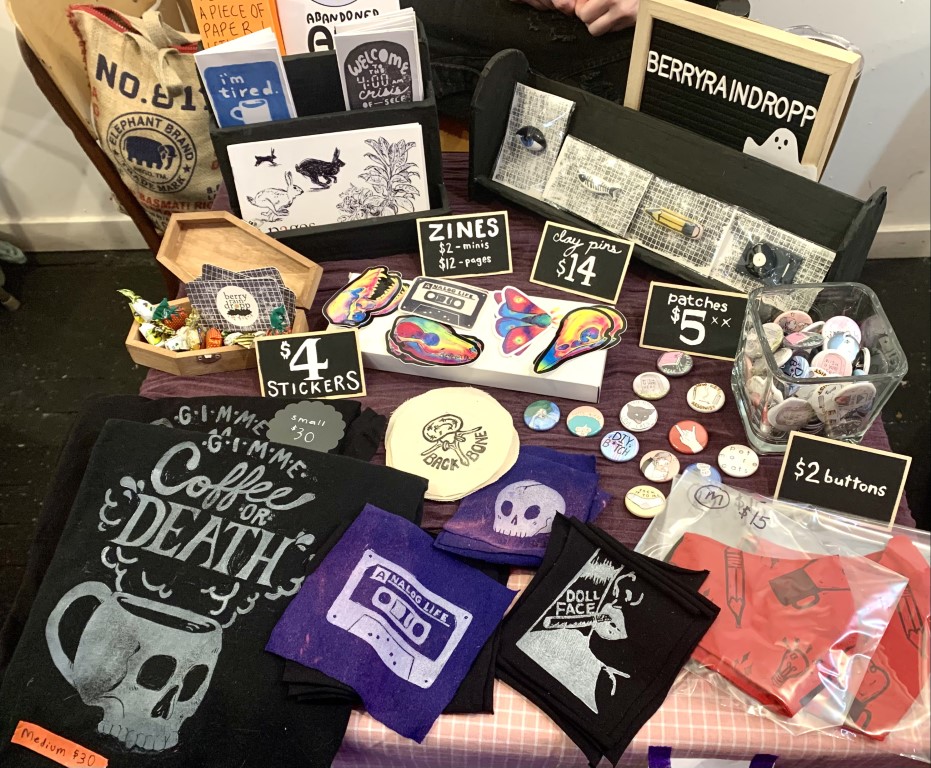
Jackson’s zines are primarily based on personal experiences, including one that explores the concept of ‘home’ — not necessarily as a place, but perhaps as a person.
Since zines can typically be printed or photocopied from home at a low cost, they truly are an ideal medium for anyone who wants to get their thoughts out into the world for others to see. They can easily be handed out to strangers on the street, sold at local events (such as this one), uploaded to the internet, or even traded with others via “snail mail”.
Sunny D of Junk Runko Bizaro (@cookiepuss13 on Instagram) first began making zines as a way to spend time with her oldest kid.
“It’s a way to put bridges between me and younger generations, to be honest,” she said. “I was intimidated at first, because I felt that I’m of a different generation … But I was like, ‘okay, we’ll see where this goes!’”
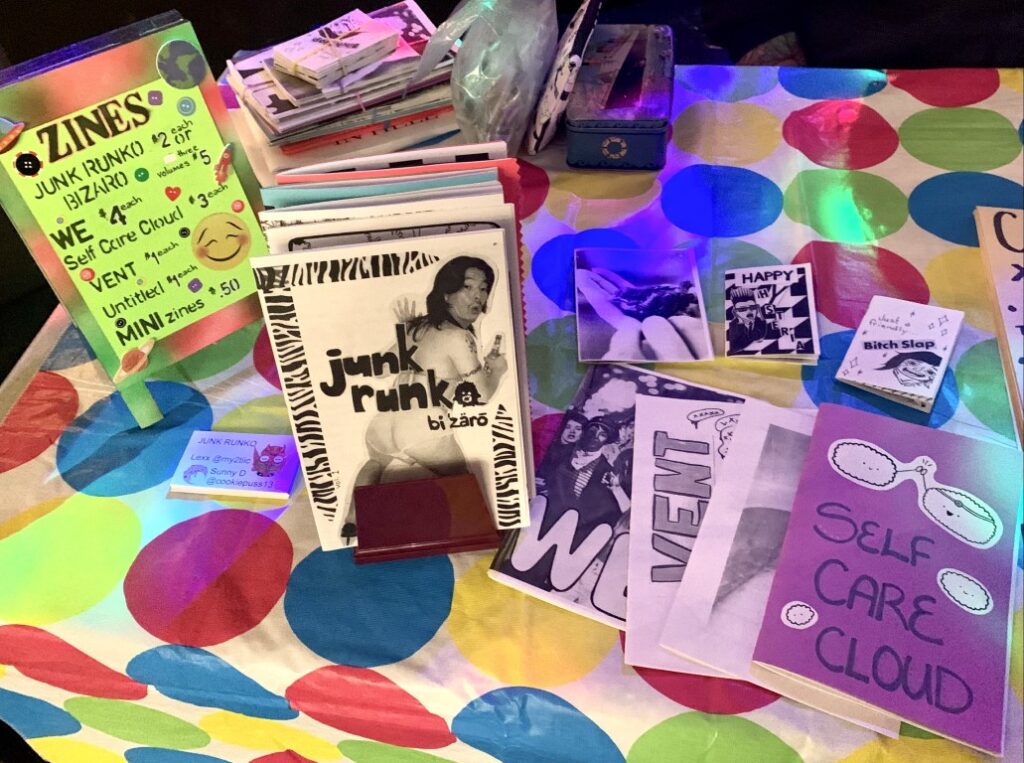
As a self-described “people person”, Sunny has since gone on to do many collaboration projects with other artists. She also loves the free thinking aspect — “There are no rules, and you can write whatever you want. Once you get over that’s how it is, it’s a lot of fun.”
Out of several zines I took home from Junk Runko Bizaro that day, the most intriguing was an untitled booklet with a front cover depicting a small bird nestled in someone’s palm. The 16-page, quarter-size publication details the story of Sunny’s longtime pen pal, Kyle, who is currently serving a life sentence in a Texas prison for murder. As I read, I became captivated by Sunny’s introspection about their relationship, the handwritten narration, and the cut-and-pasted collages of images interspersed throughout. It represents everything I love about zines — it’s personal, unconventional, and completely from the heart.
The third zinester I had a chance to speak with that afternoon was C. E. Hoffman, who launched the Visceral Uterus zine in 2012. Hoffman is a published author of two books and countless other short stories, but describes zines as an “underground publishing world”. In their words, “it gives people that chance of free—truly free—self expression that larger presses can’t.”
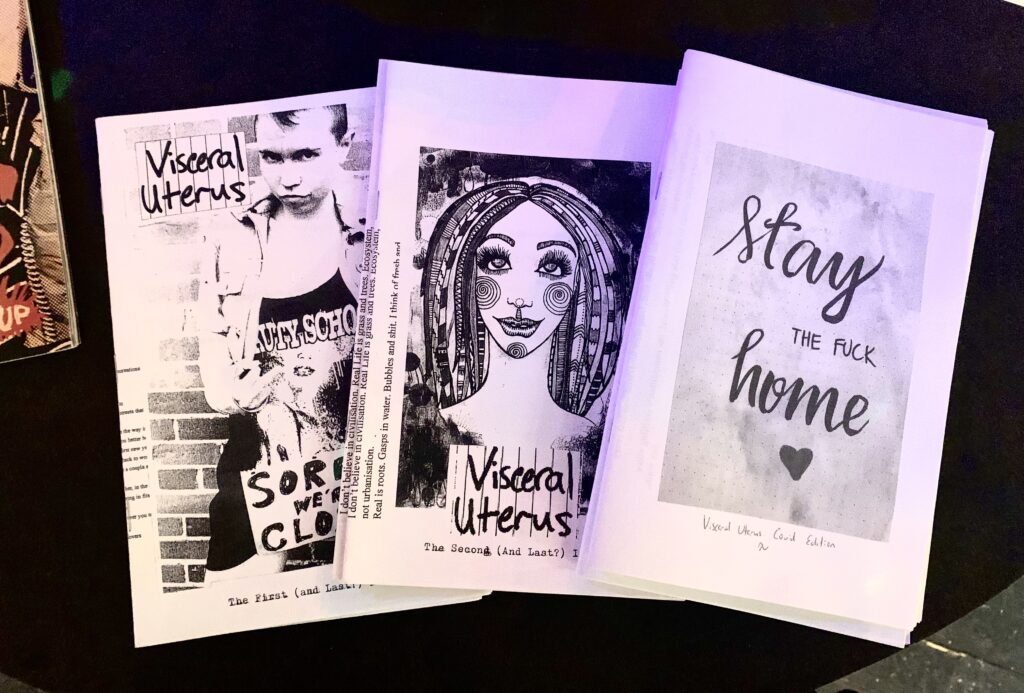
Though the Visceral Uterus initially began as a way to publish poetry, it’s since grown into more of an alt-culture zine, which Hoffman attributes to the constant evolution of art. “That’s the joy of zines, too,” they say, “They give you the space to grow.”
Hoffman gifted me a copy of Visceral Uterus’ “Covid Edition”, cheekily titled “Stay the F–k Home”, which is a 36-page, half-sized publication comprised of poetry and prose from a wide variety of authors.
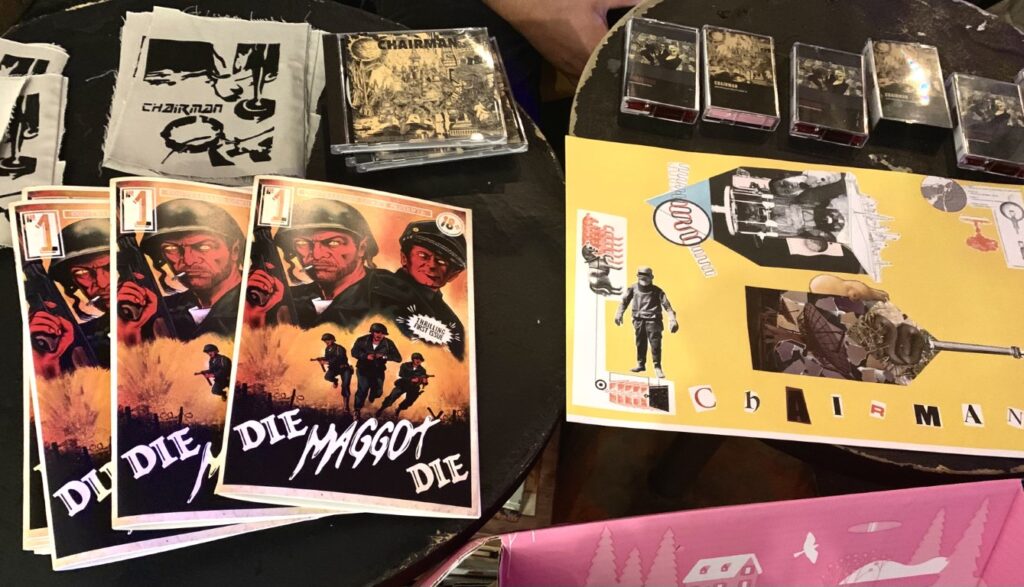
Finally, I had the chance to chat with Mattie Cuvilier, the head of Clean Up Your Act Productions since 2008 and the organizer behind this event. On display at his small table were CDs, cassette tapes, and patches for his New Wave/punk band, Chairman, as well as assorted stickers and a comic book (“Die Maggot Die #1”) created by his friend.
Cuvilier described the Edmonton Zine (& Maker) Fair to me as a “zero-barriers” space, meaning anyone is welcome to sell art, regardless of background or skill level: “If they’ve made it, it’s worthy of being celebrated,” said Cuvilier. “People ought to make something, if they’ve got something inside of themselves they need to express, and this [pandemic] is probably the best time to do that.”
As I left that afternoon—with an armful of zines, stickers, and some new art for my walls, of course—I was inclined to agree. I was glad to have had the opportunity to speak with Edmonton-area artists from a diverse range of mediums, and I can’t wait to see what the fourteenth incarnation of this event will have in store.
Edmonton Zine Fair Facebook page

